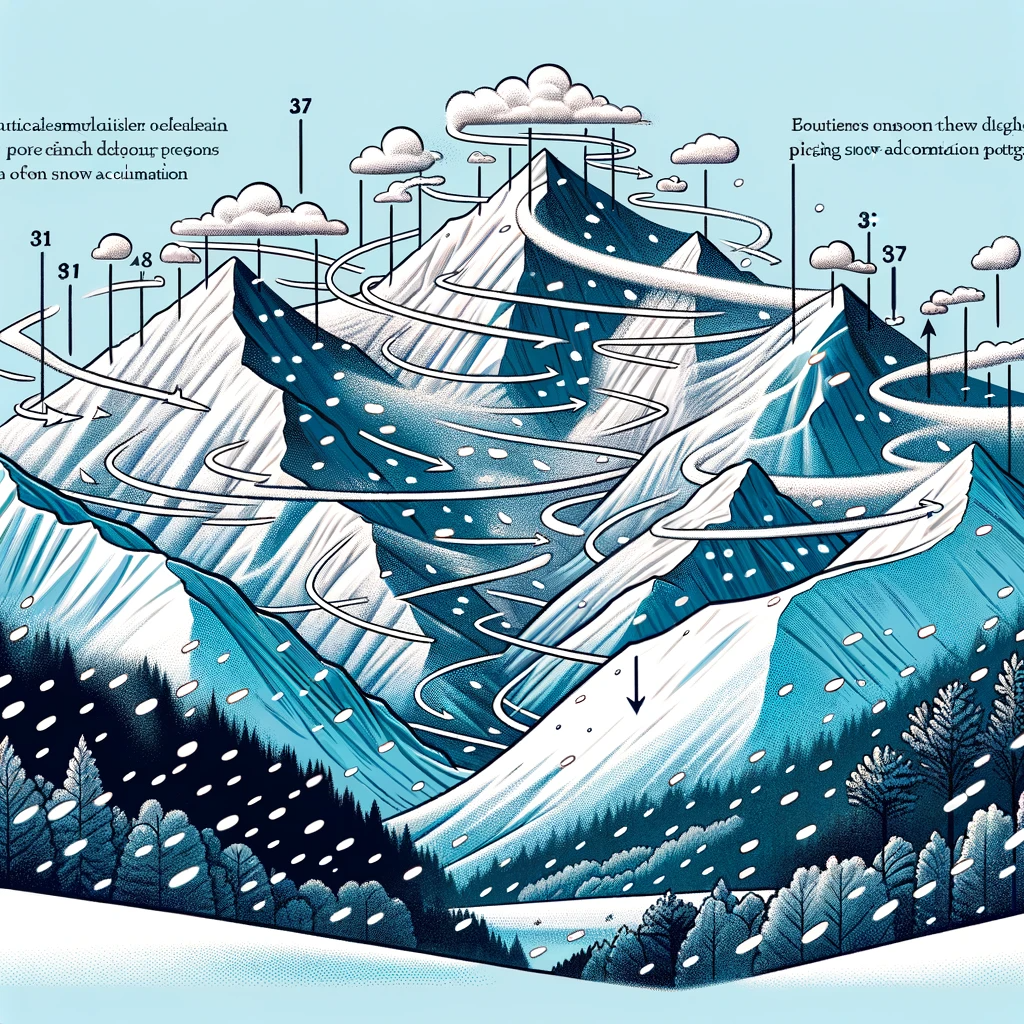
Understanding Snowfall Deposition in Mountainous Terrain: A Game-Changing Downscaling Approach
Snowfall in mountainous regions is as whimsical as it is crucial. For the uninitiated, imagine a landscape where every snowflake doesn’t just fall – it dances, swirls, and finally settles in a pattern as unique as a fingerprint. This phenomenon, vastly important for everything from predicting avalanches to managing water resources, has long been a complex puzzle for scientists.
However, a groundbreaking study Snowfall deposition in mountainous terrain: a statistical downscaling scheme from high-resolution model data on simulated topographies takes us closer to deciphering this enigmatic pattern.
The Challenge of Predicting Snowfall Patterns
Imagine trying to predict where each drop of paint will splatter on a canvas held upright; that’s akin to forecasting snowfall in the mountains. The traditional high-resolution models, akin to meticulously painting each drop, are resource-intensive. This study introduces a game-changing method: statistical downscaling. It’s like having a set of simpler brushes that can still capture the essence of the splatter with fewer strokes.
The Breakthrough: Two Downscaling Schemes
The researchers developed two statistical downscaling schemes. Think of these as two different sets of lenses through which we can view and predict snow deposition:
- The Wind Scheme: This approach requires detailed data about wind patterns at different heights. It’s like using a finer brush to capture detailed snow deposition patterns, particularly influenced by wind.
- The Aspect Scheme: This is the more versatile tool. It doesn’t need as much detailed temporal data, making it a practical choice for broader applications.
Both methods rely on a combination of low-resolution wind speed and detailed topographic data to predict where snow will accumulate.
Why This Matters
These downscaling methods are not just about snow; they are vital tools in our fight against climate change and natural disasters. Accurate snowfall patterns help in:
- Avalanche Prediction: Knowing where snow accumulates can help forecast and prevent avalanches.
- Water Resource Management: Snow acts as a natural reservoir. Understanding its distribution aids in managing these critical resources.
- Climate Science: Snow patterns influence local climates. This research helps in building accurate climate models.
Applications Beyond the Obvious
While the focus is on snow, these methods have potential applications in other areas, like studying dust deposition or analyzing wind patterns for renewable energy resources.
Putting it into Action
What’s next? These downscaling schemes need to be integrated into existing forecasting models and tools. This integration will allow for more accurate predictions, which can then be used by governments, environmental agencies, and researchers in a variety of fields.
Unlock the Secrets of Science
Get ready to unlock the secrets of science with ‘This Week in Science’! Our newsletter, designed specifically for educators and science aficionados, delivers a weekly digest of revolutionary research, innovative discoveries, and motivational tales from the scientific frontier. Subscribing is your key to a treasure trove of insights that can revolutionize your approach to teaching and learning science. Sign up today at no cost and start a journey that deepens your understanding and passion for science.



